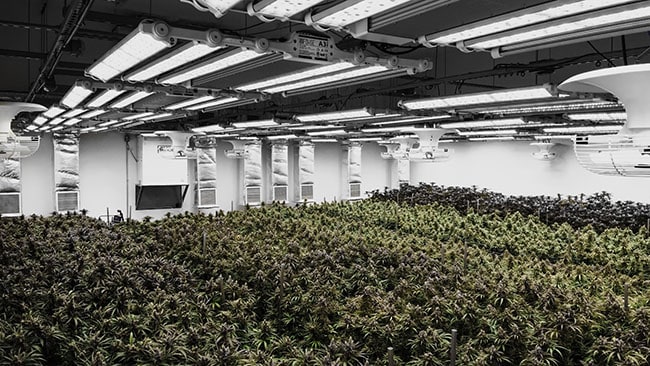TORONTO, Jan. 04, 2021 (GLOBE NEWSWIRE) — PRESS RELEASE — WeedMD Inc., a federally-licensed producer and distributor of medical-grade cannabis, has announced that its board of directors has appointed executive chairman, George Scorsis, as interim Chief Executive Officer, effective immediately. This appointment follows Angelo Tsebelis’s decision to step down from his CEO and director roles, with mutual agreement from the Board, following the successful year-long integration of WeedMD and Starseed Holdings Inc. Tsebelis has agreed to take an advisory role to help the company through this period of transition.
The company is now leading a comprehensive search process to select a permanent CEO. Concurrently, WeedMD announced today that Jason Alexander, the company’s Chief Legal Officer, has been appointed as a director and has joined the Board pursuant to the terms of the company’s nomination rights and voting agreement dated Dec. 20, 2019.
RELATED: WeedMD’s Bold Pivot in Canada’s Evolving Market
“On behalf of the Board, we thank Angelo for his leadership, focus and guidance during a complex period as we combined two companies and navigated a dynamic landscape that resulted from the worldwide pandemic last year,” said Scorsis. “Angelo was integral in merging our businesses, optimizing our operations, commercializing our sales and distribution initiatives and bringing a renewed focus on brand awareness. During his tenure, WeedMD achieved a two-fold sales increase in the first nine months of 2020, compared to the full year 2019. We appreciate his contributions to our growth, his counsel during our transition and we wish him well on his future endeavours.”
Scorsis added, “I am also pleased to welcome Jason Alexander as the newest director to our Board. Jason was instrumental in working alongside Angelo and the leadership team to fully-integrate the company into a position of strength over the past year. Moving forward, WeedMD is now anchored in the best cultivation, commercial and product frameworks in Canada as we work to accelerate our profitability goals. Together we are kicking off 2021 with a focused approach on increasing market share and commercial growth of our Color Cannabis and Saturday brands, while expanding our medical footprint through our Starseed portfolio. This includes an aggressive plan to transition WeedMD into a consumer-facing model of excellence. Ultimately becoming hyper-focused on driving meaningful results, while optimizing the organization for future success to deliver shareholder value.”
Alexander, as Chief Legal Officer, has been part of the organization since 2018 and was instrumental in the acquisition by WeedMD and Starseed. He oversees all areas of corporate performance including compliance, quality assurance, risk, legal and corporate affairs and served as Corporate Secretary of the company over the past two years. With over 15 years of senior corporate experience navigating complex transactions and commercial matters, Alexander was previously Chief Legal Officer of Starseed, legal counsel for Shoppers Drug Mart and a corporate lawyer at Miller Thomson LLP.
Scorsis, with nearly 20 years of commercial experience in the consumer packaged goods (CPG), beverage and the cannabis industries, has been a vital member of the Board since 2019 and is widely recognized for building high-performing teams. As former CEO and director of Liberty Health Sciences, Scorsis led that company’s expansion into the U.S.-medical cannabis market. He also served as the president of one of Canada’s first public cannabis companies, Mettrum Health Corp., where he was instrumental in a successful exit valued at approximately $430 million. Prior to joining the cannabis industry, Scorsis was General Manager of Red Bull Canada where he helped restructure that company geographically, increasing business revenues by $150 million annually.






